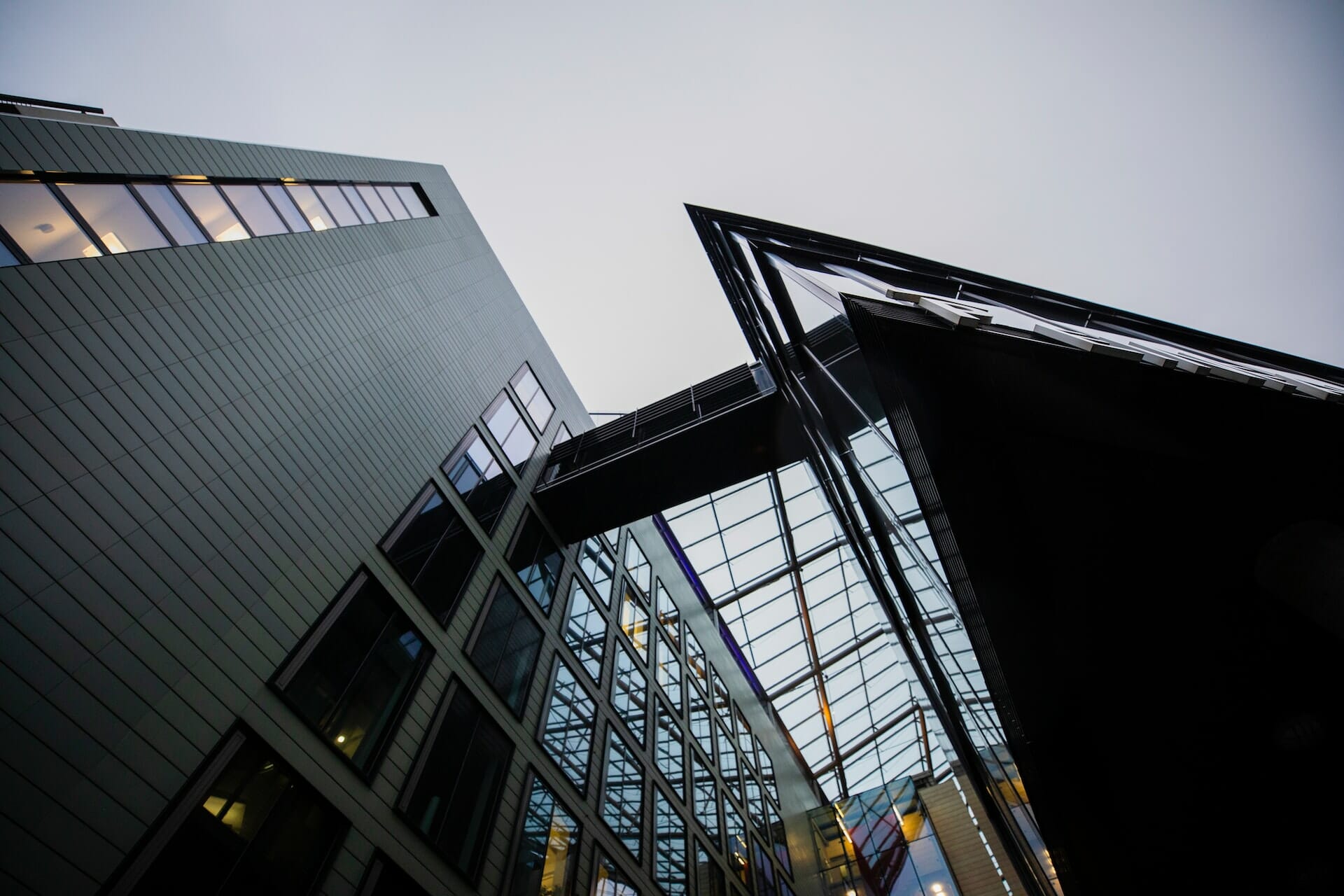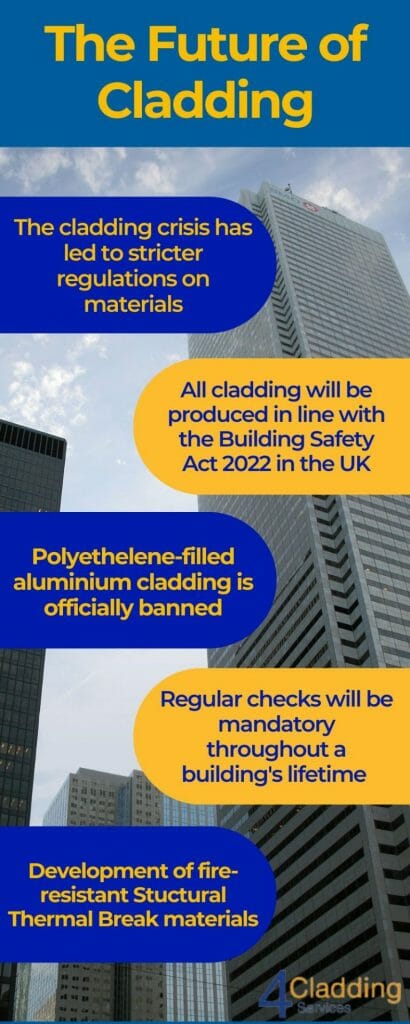
In the wake of the Grenfell disaster, the topic of cladding has been on everyone’s radar. Many building owners have had to reconsider their current cladding materials to see if they are safe to use. Buildings with the same cladding used on the Grenfell tower block are at risk of causing serious harm to residents.
It is safe to say that the world of cladding is changing drastically. There has been a long period of neglect regarding proper building regulations, which was the main factor that contributed to the tragedy at Grenfell. So, how will the world of cladding look going forward? There are many safe materials and construction methods for cladding, and it is still a leading contender for improving a building’s thermal efficiency. Here’s what is in store for cladding in the future.
What Is Britain’s Cladding Crisis?
The cladding crisis occurred due to the Grenfell Tower fire of 2017. Seventy-two people lost their lives in the terrible blaze that engulfed the tower London tower block. This event sparked outrage as people quickly learned that 300 other buildings nationwide were clad in the same unregulated materials. Anyone who uses or inhabits these buildings is at serious risk of harm if a fire breaks out.
After uncovering the truth about years of building work using unregulated highly flammable cladding, the government made it mandatory for all dangerous cladding to be removed. It must now be replaced with safe materials. However, building landlords had to cover the cost of the renovations which would amount to hundreds of thousands of pounds in building work. Those landlords who could not afford the necessary renovations transferred the cost to building residents. The main demographic of these high-rise blocks is working class and unemployed people, who certainly can’t afford to pay thousands in construction costs.
Repairing Years of Unregulated Cladding
The first step to fixing the cladding crisis is removing and replacing any dangerous cladding still on high-rise buildings. The aluminium cladding used to insulate many commercial buildings in England has must now be replaced with a less flammable alternative. The previous cladding was found to be insulated with polyethylene, a highly flammable substance. This material enabled the fire in Grenfell to spread much quicker than if the building were clad in something else, costing many people their lives.
Although dangerous materials significantly contributed to the severity of the Grenfell disaster, they weren’t the only things to blame. Years of neglected building regulations and a drive for improved energy efficiency meant many contractors opted for the cheapest materials to clad older tower blocks. No safety checks were carried out on this cladding, which could have saved those who lost their lives in the fire.
Building Regulations Reform
The impact of Grenfell has been influential and led to a complete overhaul of building and fire safety regulations to prevent an event like that from ever happening again. As of last year, over 50 buildings still had Grenfell-style cladding in the UK. This is a vast improvement from previous years. However, it still means an estimated half a million people whose lives are still at risk.
Former Chair of the UK Health and Safety, Judith Hackitt, led an investigation into the cause of the Grenfell Tower fire. Her findings were controversial, as she named insufficient regulations as the leading cause of the blaze. She called for a radical rethink of the system to hold building designers and contractors accountable for upholding the proper health and safety regulations instead of looking for cheap and easy fixes. Regular building safety audits must now be carried out from when a structure is being built and periodically throughout its life to ensure it is fit for use.
How Will Cladding Change Going Forward?
Despite the anxiety post-Grenfell, cladding remains a popular technique for improving building efficiency. More so than ever, energy efficiency is at the forefront of people’s minds as energy prices continue to soar. Cladding is an excellent way to protect a building from extreme weather and cold temperatures whilst also helping it to retain heat.
The polyethylene-insulated aluminium cladding used to insulate Grenfell and other tower blocks have officially been deregulated, so building designers and contractors are responsible for looking for safer cladding options. Thankfully, there are many different types of safe and durable cladding on the market made of non-flammable materials.
What is cladding useful for?
There are multiple benefits to properly cladding a building. It can be a highly effective tool in protecting and preserving a building’s exterior. Its benefits include:
- Protecting a building from adverse weather
- Providing extra stability & security
- Regulating indoor temperatures
- Preventing the spread of fire
- Sound insulation
Focus on fire safety
It is to be expected that one of the biggest changes to cladding in the future will be ensuring maximum fire safety. This problem is not unique to the UK either. There have been a number of fire-related infrastructure incidents which have led to a rethink in how cladding is constructed. The focus on producing cladding with fire-resistant materials is one of the significant changes to previous cladding methods. This cladding uses a Structural Thermal Break material which can hold its structure when exposed to temperatures up to 1000⁰C.
Evolving Your Cladding of the Future
Considering the impact of cladding on a building’s structure is crucial. A lot has changed and will continue to do so in the coming years. New industry regulations and legislation will remove the risk of using unsafe materials. Going forward, it is essential to ensure you are working with a reputable supplier to confirm your cladding is safe and follows regulations. Ensuring trust and transparency with your cladding provider and ensuring they work in line with the Building Safety Act 2022 is necessary. Regular safety checks and inspections will also ensure the cladding is safe and not a potential hazard.

Related Blogs
Britians Cladding Crisis: What You Need to Know